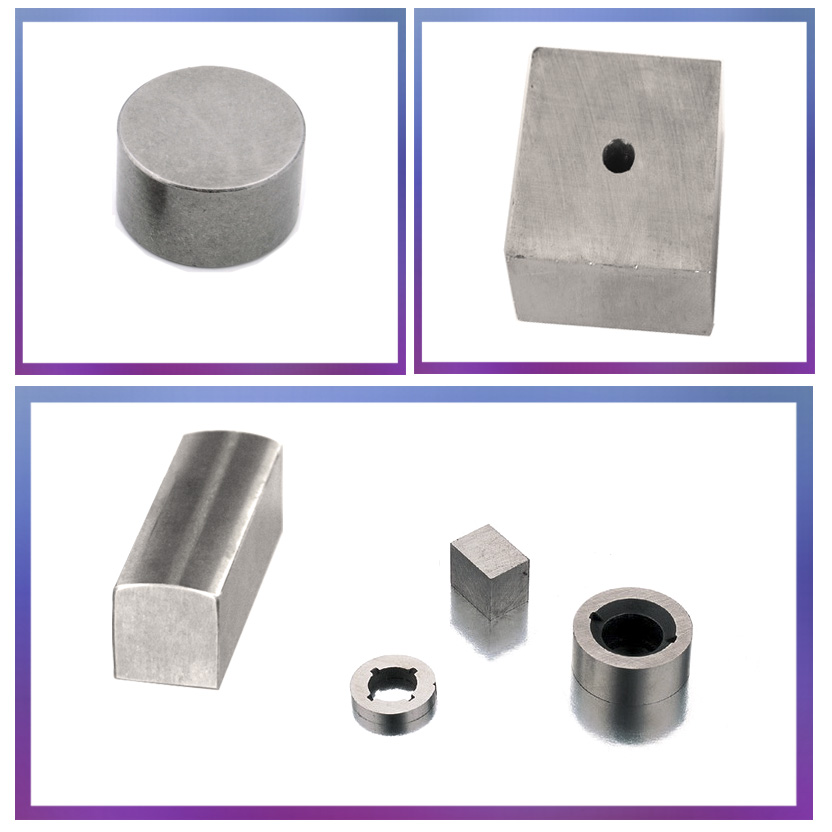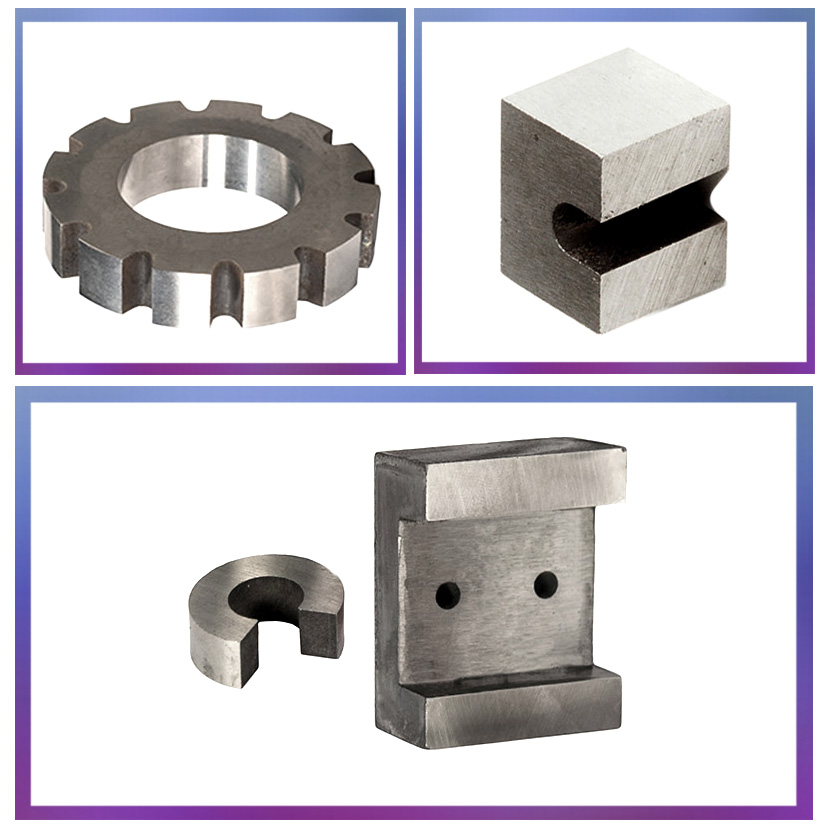Alnico is an alloy of Aluminium, Nickel and Cobalt.It also contains Iron , Copper ,Titanium, Different metal
component constitution will form different magnet properties, application will also change accordingly.
Alnico is produced by sintered or casted technique,Its`surfaces may need machining,or to be ground for a smoother surface finish and looks brightly metallic looking. Casting means can producing AlNiCo forvariety sizes and shapes, Sintered Alnico is subsize and have very tiny tolorance but machanical performance is not good.
The most commonly used Alnico is Alnico5. There are 4 sort of cast Alnico5 plus a singlesort of sintered Alnico5 (sintered Alnico and cast Alnico have slightly different magnetic and mechanical performance). Among the permanent magnetic materials, AlNiCo have the best reversible temperature coefficient, the highest working temperature up to 500 ℃,it has the
hardest and toughest strongness.Most Alnico magnet grades are anisotropic (axial / vertical direction add magnetization).The others are isotropic(horizontal direction magnetized and usually have many poles on one magnet) they are weaker on magnetism but offer more options on design and properties.
ALNICO Magnet,Cast ALNICO Magnet,ALNICO 8 Magnet,ALNICO 5 Magnet NINGBO SHINE MAGENETIC TECHNOLOGY CO.,LTD , https://www.shinemagnets.com
The working principle of the electronic scale is stopped by the weighing object or the truck on the weighing platform. Under the action of gravity, the electronic platform scale conveys the gravity to the sensor, resulting in the deformation of the elastomer attached to the sensor. The strain gauges and bridges on the strain girders lose their balance. The output is proportional to the weight of the electrical signal. The signal is amplified by a linear amplifier and then converted into a digital signal by A/D. The weight signal is generated by the microprocessor in the instrument. Display the weight directly after processing. After configuring the printer to print the weighing data; such as computer configuration, the number may be entered directly metered weight management system for integrated management <br> <br> look at the configuration of the electronic scales
(1) Weighing platform (load-bearing and force-transmitting mechanism) It is all mechanical systems that transfer the weight or square of the object to be weighed to the load cell, including load-bearing platform, scale bridge structure, hanging connection unit, safety limit device, etc. The market is mainly steel scales.
(2) The load cell is generally called a primary conversion element, which can convert the weight or force acting on it into a power (voltage, current, frequency, etc.) output according to a certain functional relationship (generally a linear relationship);
(3) Weighing display instrument is generally called secondary display instrument, which is used for the value of electric signal output by 2B0 quantity load sensor, and displays the weight value in pointer or digital form (modern measuring instruments also include data processing, Printing device, etc.);


The working principle and composition of electronic scales
The composition of electronic scales? If we use electronic scales for a long period of time, we still need to make an understanding of these issues so that we can better use electronic scales. Let us first look at how electronic scales work.